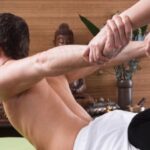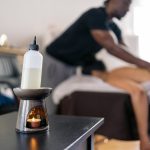Chavutti Thirumal vs. Ayurveda Massage: A Deep Dive into Ancient Techniques

Ayurveda is a comprehensive philosophy that prioritises balance and, well-being when it comes to traditional therapeutic methods. Of all these methods, two particular massage styles—Chavutti Thirummal and traditional Ayurvedic massage—have drawn the interest of people looking for natural remedies. Both offer distinct experiences with particular advantages, yet share a common philosophical foundation.
This blog delves into the fascinating worlds of both Ayurvedic massage and Chavutti Thirummal, examining their similarities and differences. Making the greatest choice is our goal. We’ll walk you through the history and techniques of each practice, as well as any potential benefits for your mental and physical well-being.
A Journey Through Time: The Origins of Chavutti Thirummal and Ayurvedic Massage
Chavutti Thirummal’s Legacy:
The word “foot pressure massage” in Malayalam is Chavutti Thirummal, and it has a long history. It is said to have originated in Kerala, India’s Kalaripayattu martial art tradition. Warriors used this unique foot massage technique to maintain their overall physical conditioning, boost their recovery, and increase their flexibility. Originally a martial arts style, Chavutti Thirumal has evolved into a therapeutic approach to enhance general health and well-being.

The Ayurvedic Connection:
Ayurvedic massage, also known as Abhyanga, is a key element of Ayurvedic therapy, a complete therapeutic approach developed in India over 5,000 years ago. According to Ayurveda, the body’s three doshas—pitta, kapha, and vata—need to be in balance. During an abhyanga session, warm herbal oils are administered to certain body areas to promote improved circulation, relaxation, and purification.
Unveiling the Techniques: Chavutti Thirummal vs. Ayurveda Massage
The Power of the Feet: Exploring Chavutti Thirummal:
Chavutti Thirummal is notable for its unique approach. The massage is given by the therapist, who is frequently dressed in white, using their feet. They use their heels, toes, and soles to execute long, rhythmic strokes across the client’s body while maintaining their balance with the aid of a hung rope. This method makes it possible to manipulate deep tissue, even in places that hands might find difficult to reach.
The Nuances of Ayurvedic Massage:
Traditional Ayurvedic massage, on the other hand, uses the therapist’s hands. Depending on the dosha constitution of the individual, warm, medicinal oils are administered. To increase lymphatic drainage, encourage relaxation, and stimulate circulation, the therapist employs a variety of techniques, such as tapping, kneading, stroking, and pressure point manipulation.
Similarities and Distinctions: A Comparative Analysis:
While both Chavutti Thirummal and Ayurvedic massage share the core principles of Ayurveda, some key differences set them apart:
- Pressure: Because the therapist uses their feet, Chavutti Thirummal is renowned for its deeper tissue work. The pressure used in an Ayurvedic massage can vary based on the intended result.
- Focus Area: Traditionally, Chavutti Thirummal avoids sensitive areas such as the tummy and chest, instead concentrating mostly on the back of the body. You can give yourself an Ayurvedic massage on your complete body, including your head, neck, and limbs.
Chavutti Thirummal is a fantastic choice for people who are sensitive to greasy massages or hot weather because it uses little to no oil. Warm oils that are tailored to the dosha and selected for their therapeutic qualities are typically used in Ayurvedic massages.
A Tapestry of Benefits: Exploring the Potential of Each Practice
Chavutti Thirummal’s Therapeutic Touch:
This unique foot massage offers a range of potential benefits:
- Deep Tissue Release: This technique helps release knots in the muscles and chronic tension by using the therapist’s feet to reach deeper muscle layers.
- Increased Flexibility: Chavutti Thirummal’s long strokes and pressure areas can improve joint flexibility and range of motion.
- Enhanced Circulation: By encouraging blood flow, the rhythmic footwork helps improve the body’s distribution of nutrients and oxygen.
- Stress Reduction: The focused movements and deep pressure can help you relax and feel at ease, which will help you feel better overall.



